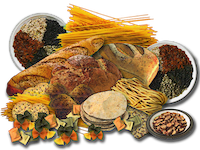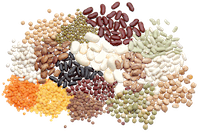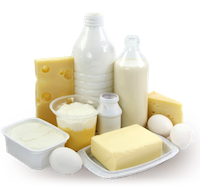Purpose of Elimination Diet
– Reduce stress
– Stabilize sugar management
– Remove all possible allergens
– Reduce inflammation markers
– Repair GI
– Detoxify
– Repair DNA and Methylation
– Hormonal optimization
– Improvement in body composition
Foods Not permitted
Grains:

All grains including wheat, rice, corn, barley, quinoa, etc.
Legumes:

All legumes including soy, peas and peanuts.
Dairy:

All dairy including butter, milk, cream, cheese, whey, and casein.
Eggs:
All eggs including chicken, duck and quail (only if GI issues suspected otherwise in limited quantities).
Vegetables:
All nightshades that includes tomato, eggplant, potatoes, etc. Other high starch vegetables may need to be removed for most people starting such as sweet potatoes, yams, carrots. Kale and other vegetables very high in oxalic acid (unless well cooked and drained).
Nuts/Seeds:
All nuts and seeds including sunflower seeds, walnuts and almonds.
Lipids:
All processed oils including vegetable oils.
Meats:
Processed meats, pork, non organic, unnatural feed (grain)
Seafood:
All, due to contamination of seafood. Also avoid all Farmed & GMO seafood.
Fruit:
All except avocado
Spices:
Table salt and non-organic spices or spices that are part of the nightshade family.
Alcohol:
None (This should be a no brainer)
Sweeteners:
Aspartame, Agave, Acesulfame Potassium, Etc. (Stop feeding the sweet tooth).
Chemicals:
All food additives and other chemicals added to food. Read labels, better yet buy natural whole foods not in a packet.
Other:
Coffee, green tea, black tea, and caffeine containing products (especially if adrenal dysregulation is suspected).
Food allowed (Organic/BioDynamic)
Fruit:
Avocado
Lipids:
Coconut oil, lard, MCT oil, olive oil-Never heated
Vegetables:
All other vegetables (broccoli, spinach, cabbage, zucchini, etc.). Root vegetables or high starch vegetables should be limited.
Meats:
All other natural fed organic meats and organ meats (Beef, chicken, buffalo, wild boar, alligator, venison, horse, zebra, snake, etc.).
Eggs:
If GI issues are not present and in limited quantities All eggs including chicken, duck and quail.
Spices:
Natural salt (Pink Himalayan salt) and other organic spices.
Other:
Spirulina, kelp, cholera
Calculating Food Quantity
Baseline calculation should be based on grams and not calories. Calories are a worthless measurement that have nothing to do with humans (see article at end of document).
Starting point to calculate approximately how many grams of each of the macronutrients, protein, fat and carbs (in that order).
First starting with protein you want to look at 1.5 – 2 grams per kilogram (lbs divided by 2.205) of bodyweight. If you weigh 80kg (176.4lbs) then you would need 120-160 grams of protein per day.
Next is fat which is .8 – 1.2 grams per kilogram of bodyweight. At 80kg that would calculate out to be 64-96 grams of fat per day.
Lastly with carbs the numbers is a lot lower at 1 – 1.5 grams per kilogram of bodyweight. At 80kg you will be looking at between 80-120 grams of carbs per day.
Bodyweight: 80kg
Protein: 120-160 grams
Fat: 64-96 grams
Carbs: 80-120 grams
These are only base line numbers and must be customized to the individual. Even with these numbers there may be some variance in the calculations.
These steps can be implemented one at a time or all together.
1. Reduce stress
– Eliminate key stressors where possible (this could be people around you).
– Look at your own thoughts and reactions to stress. Change your outlook.
– Work-out, Work-in, listen to your body and give it what it needs.
– Plan your day every day.
– Breathing exercises or meditation.
– Supplement with adaptogens.
2. Improve Sleep Patterns
– Go to bed between 9pm to 10pm every night including weekends.
– Minimum 8 hours uninterrupted, high quality sleep
– Eliminate EMF’s (shut off WiFi and cellular devices at night, use EMF filters)
– Balance neuroendocrine system
– Balance neurotransmitters
– Monitor sleep patterns (Sleep Cycle app http://www.sleepcycle.com/)
– Use light therapy (red LED before bed, blue LED during day)
3. Stabilize blood sugar and improve insulin sensitivity
– Remove high glycemic load foods from diet (this includes many grains)
– Remove dairy
– Remove all fruit
– Supplement to improve sugar management and insulin sensitivity.
4. Address methylation pathways.
– Run specific clinical test for methylation and gene markers
– Provide support for methylation pathways
5. Remove all possible allergens
– Remove grains
– Remove legumes
– Remove nightshade vegetables
6. Remove all remaining food from “banned” list
– Remove nuts
– Remove eggs
– Unnatural oils
7. Repair gastrointestinal system
– Run specific clinical test for gastrointestinal system
– Address nutrient deficiencies
– Reduce inflammation
– Support repair of gastrointestinal system
– Support HCl production
– Support pancreas and gallbladder
8. Detoxify (latter stage especially after repairing GI)
– Run specific clinical test for detoxification
– Remove toxins from environment
– Address nutrient deficiencies
– Support detoxification pathways
– Use FAR Infrared Sauna
– Use Colonics and Enamas
– Use Detoxification Baths
9. Hormonal optimization (detoxification should be addressed first)
– Run specific clinical test for hormonal profile (see blood tests)
– Look for underlying pathology and correct.
– Optimize hormonal balance with supplementation and/or bioidentical hormones.
10. Repair/Protect DNA
– Run clinical test for SNPs
– Run clinical test for telomere length (average & short telomeres)
– Optionally you could also run genetic testing www.23andme.com
